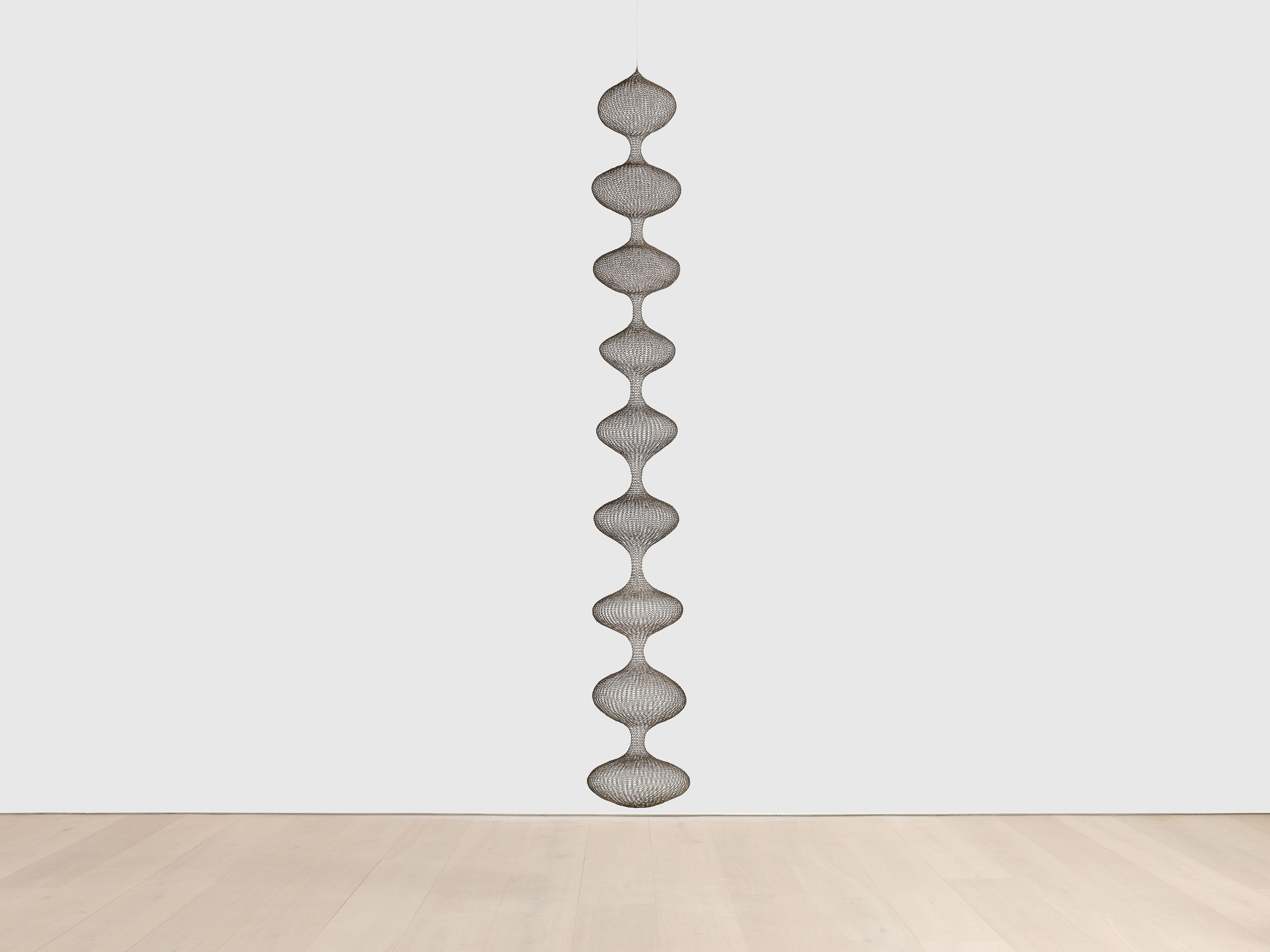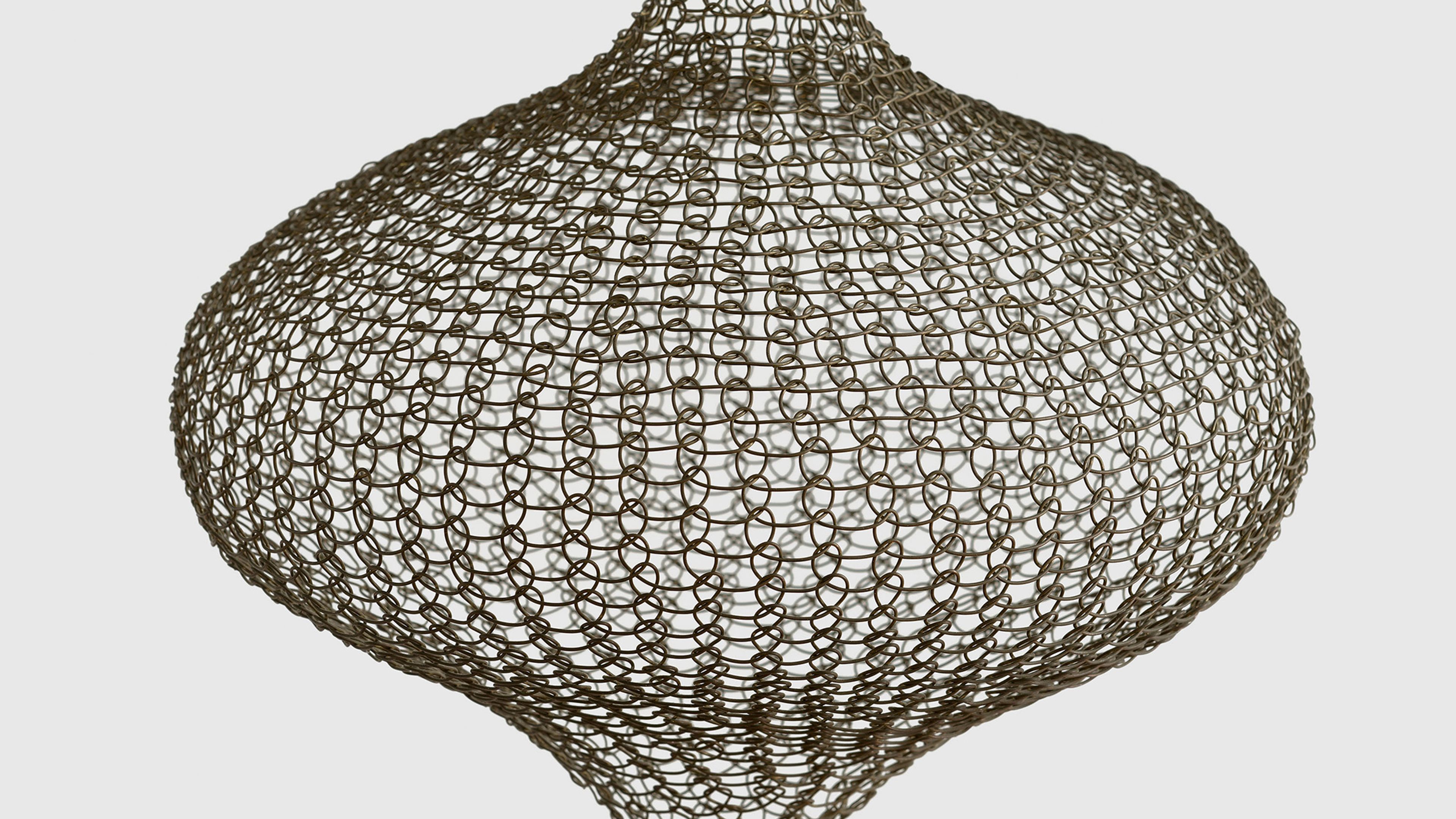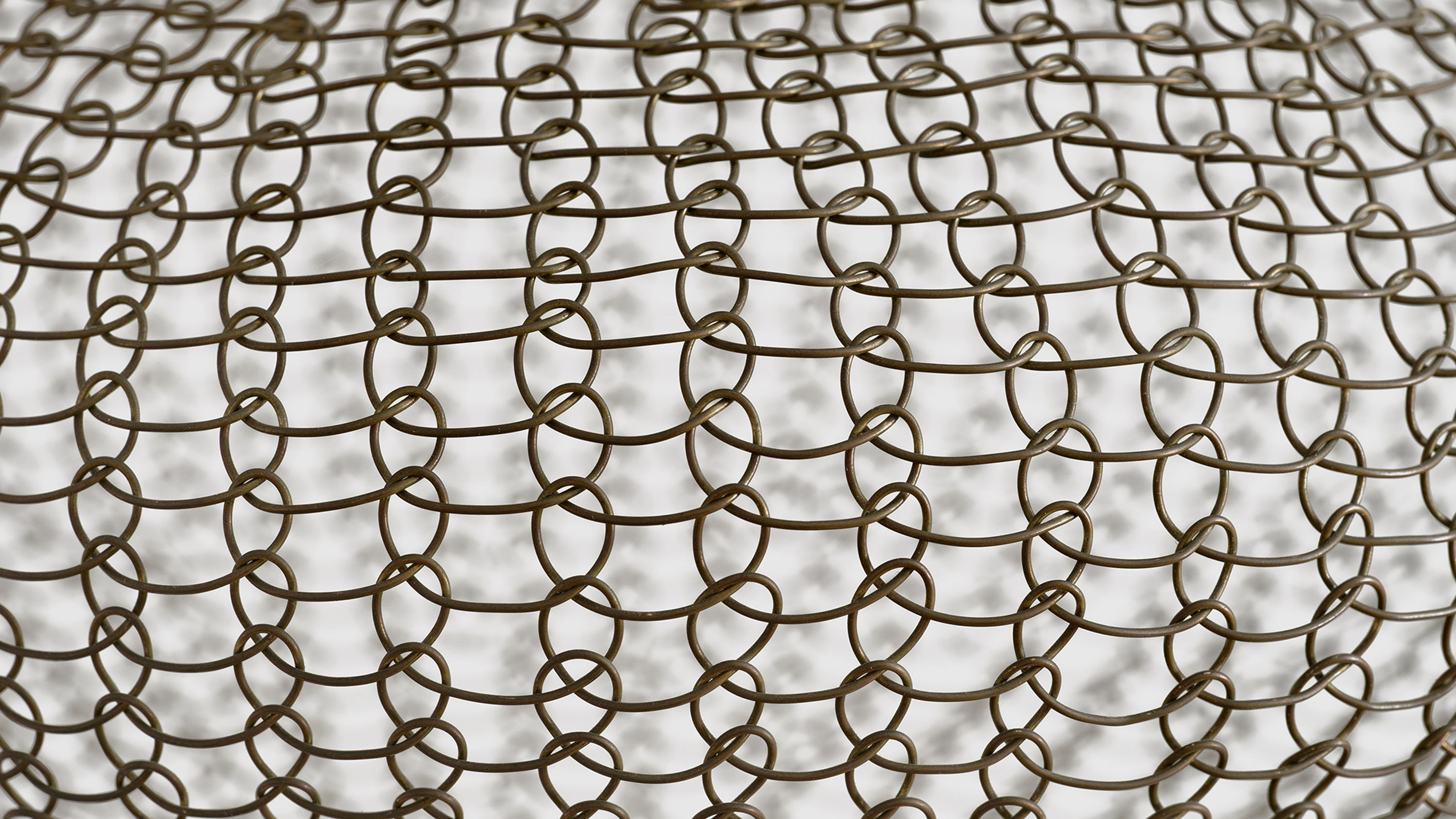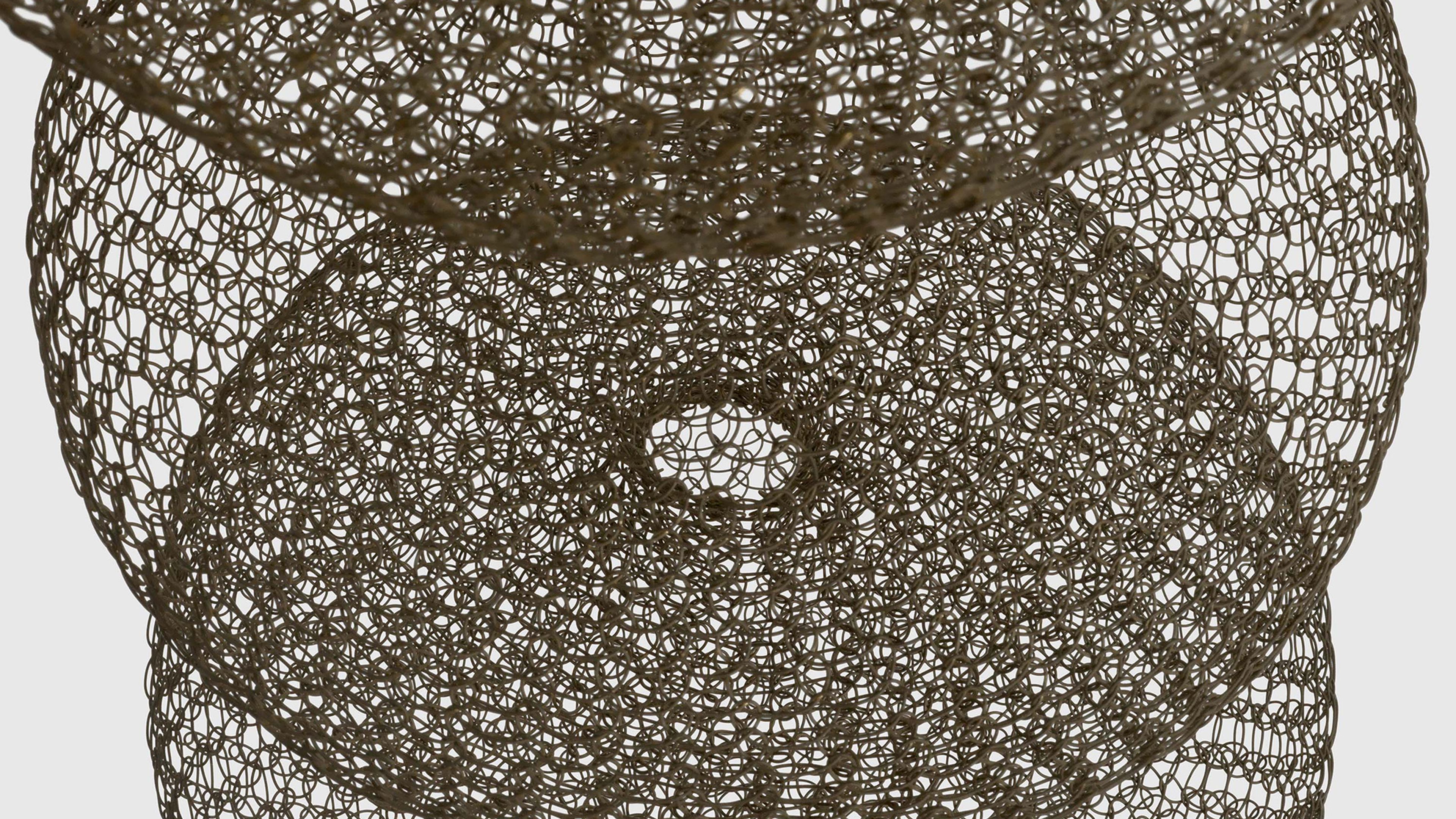Exceptional Works: Ruth Asawa
Untitled (S.278, Hanging Nine-Lobed, Single-Layered Continuous Form), c. 1955
Hanging sculpture—brass wire 117 x 16 3/8 x 16 3/8 inches 297.2 x 41.6 x 41.6 cm
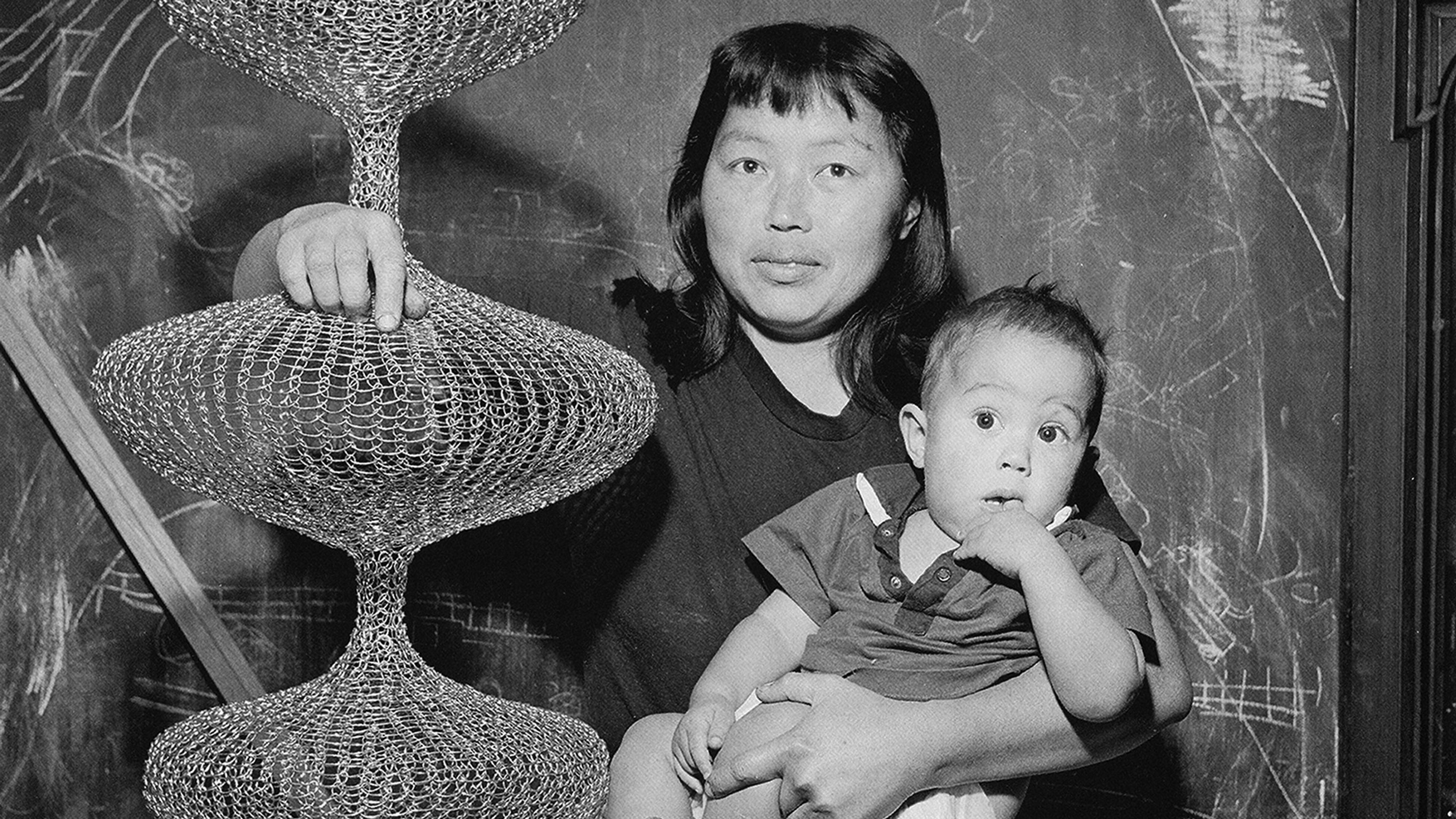
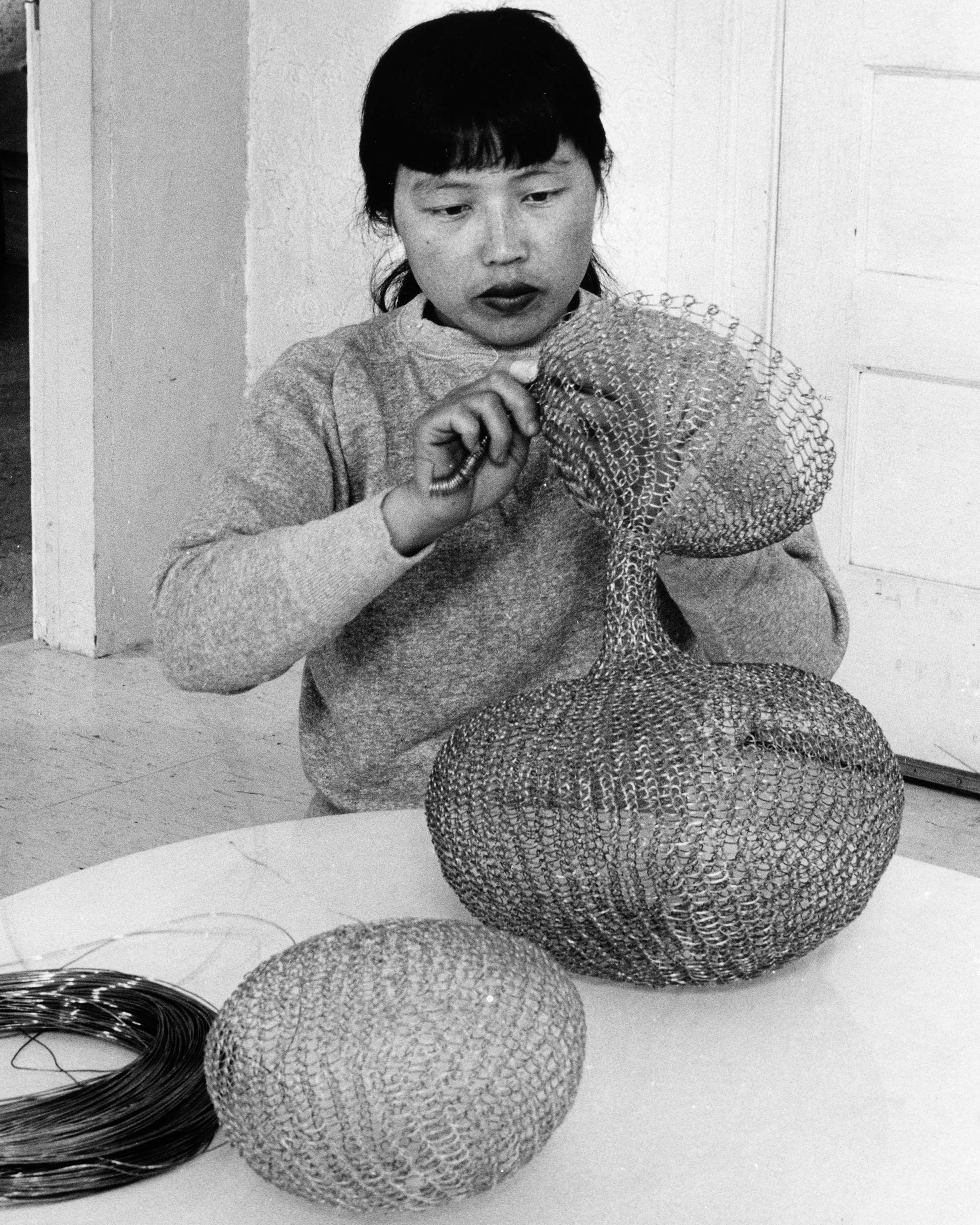
Ruth Asawa working on her wire sculpture, 1956. Photo © Imogen Cunningham Trust. Artwork © 2025 Ruth Asawa Lanier, Inc./Artists Rights Society (ARS), New York
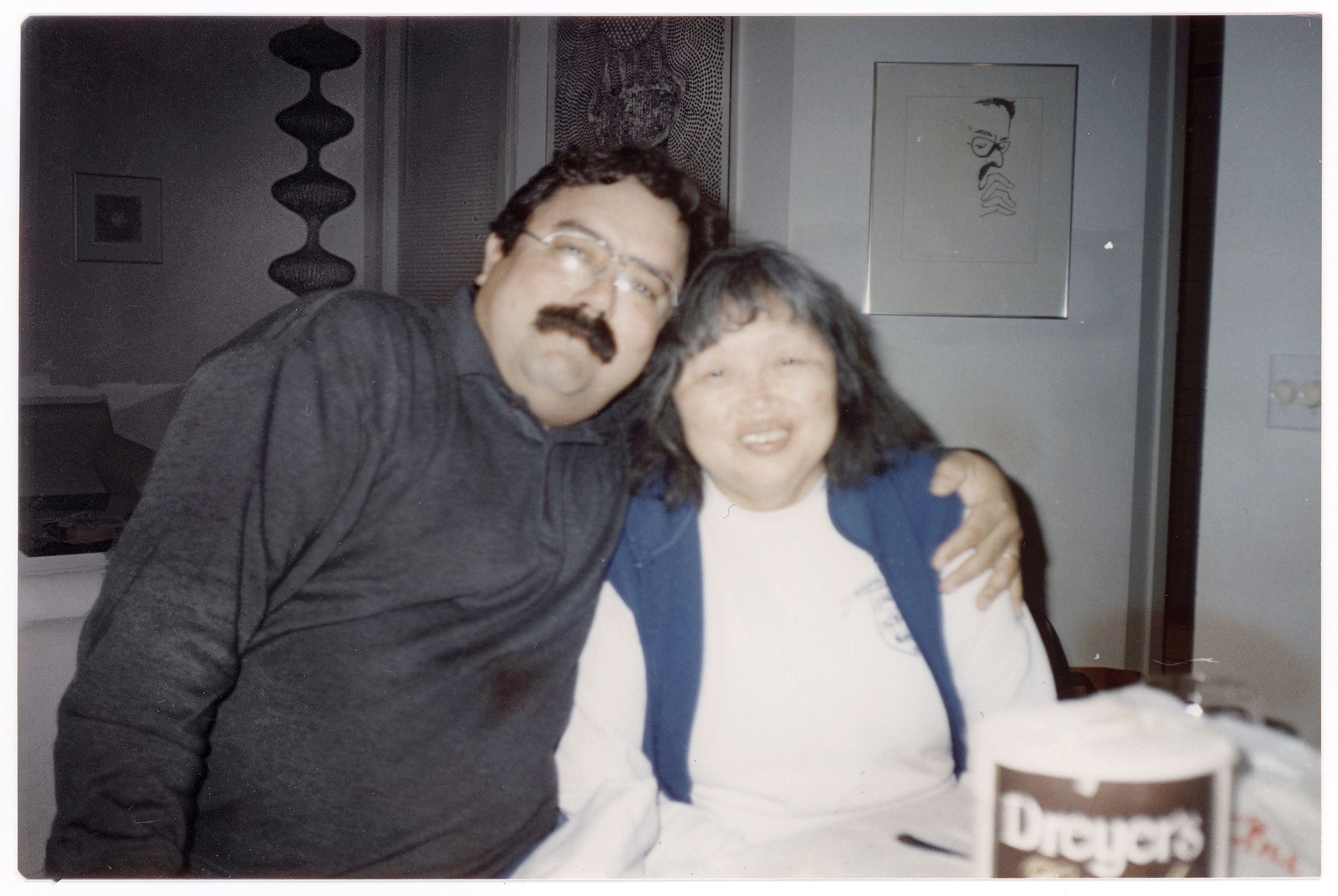
Ruth Asawa with her son. Untitled (S.278, Hanging Nine-Lobed, Single-Layered Continuous Form), c. 1955 is visible in the background to the left.
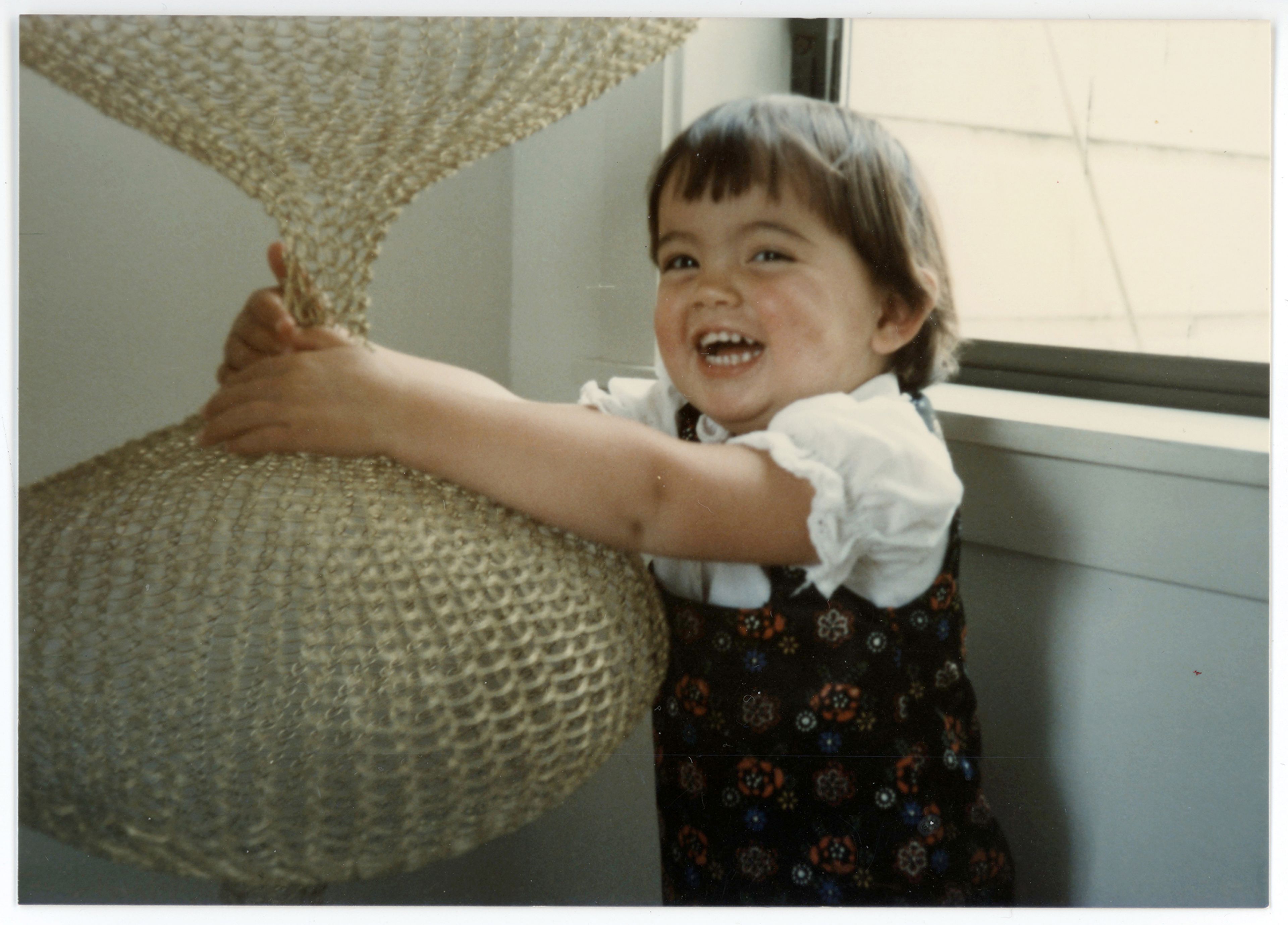
One of Ruth Asawa’s grandchildren with Untitled (S.278, Hanging Nine-Lobed, Single-Layered Continuous Form), c. 1955
Asawa began working with wire in the late 1940s as a student at Black Mountain College in North Carolina, where her teachers included Josef Albers, Merce Cunningham, and Buckminster Fuller. “I consider Ruth Asawa to be the most gifted, productive, and originally inspired artist that I have ever known personally,” Fuller later said.
During the summer of 1947, Asawa volunteered with the American Friends Service Committee, traveling to Toluca, Mexico, where she taught art to children and adults. It was over the course of this trip that local artisans showed her how to create baskets out of wire, teaching her the looping technique that she would at first clumsily replicate, but quickly learned how to use to create increasingly complex compositions.
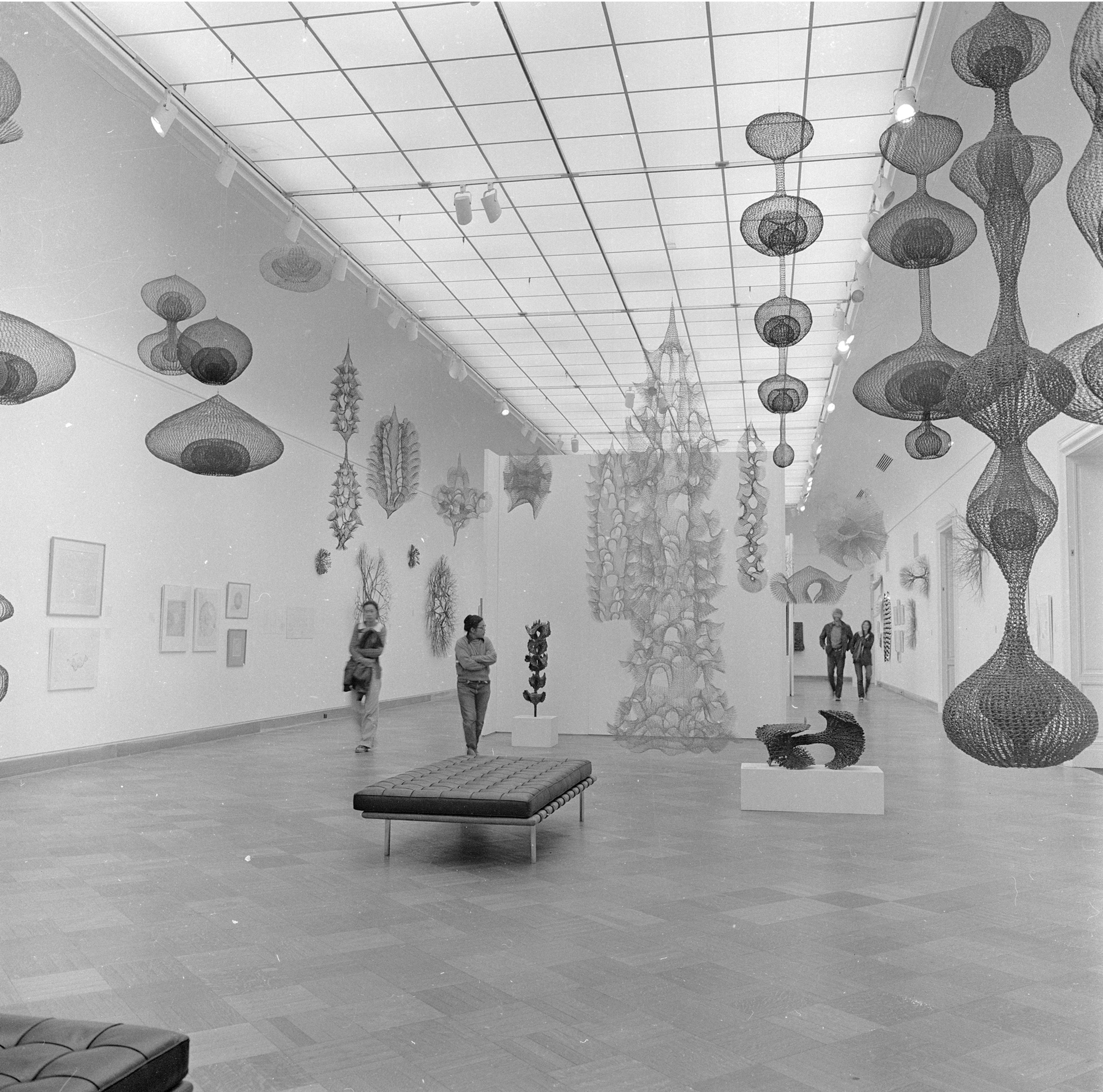
Ruth Asawa (second from left) with visitors to her 1973 retrospective at the San Francisco Museum of Art (now SFMOMA). Photo by Laurence Cuneo
“The lesson taught us by [Josef] Albers was to do something with a material which is unique to its properties. The artist must respect the integrity of the material. I realized I could make wire forms interlock, expand, and contract with a single strand because a line can go anywhere, whereas a solid sheet is limited.”
—Ruth Asawa
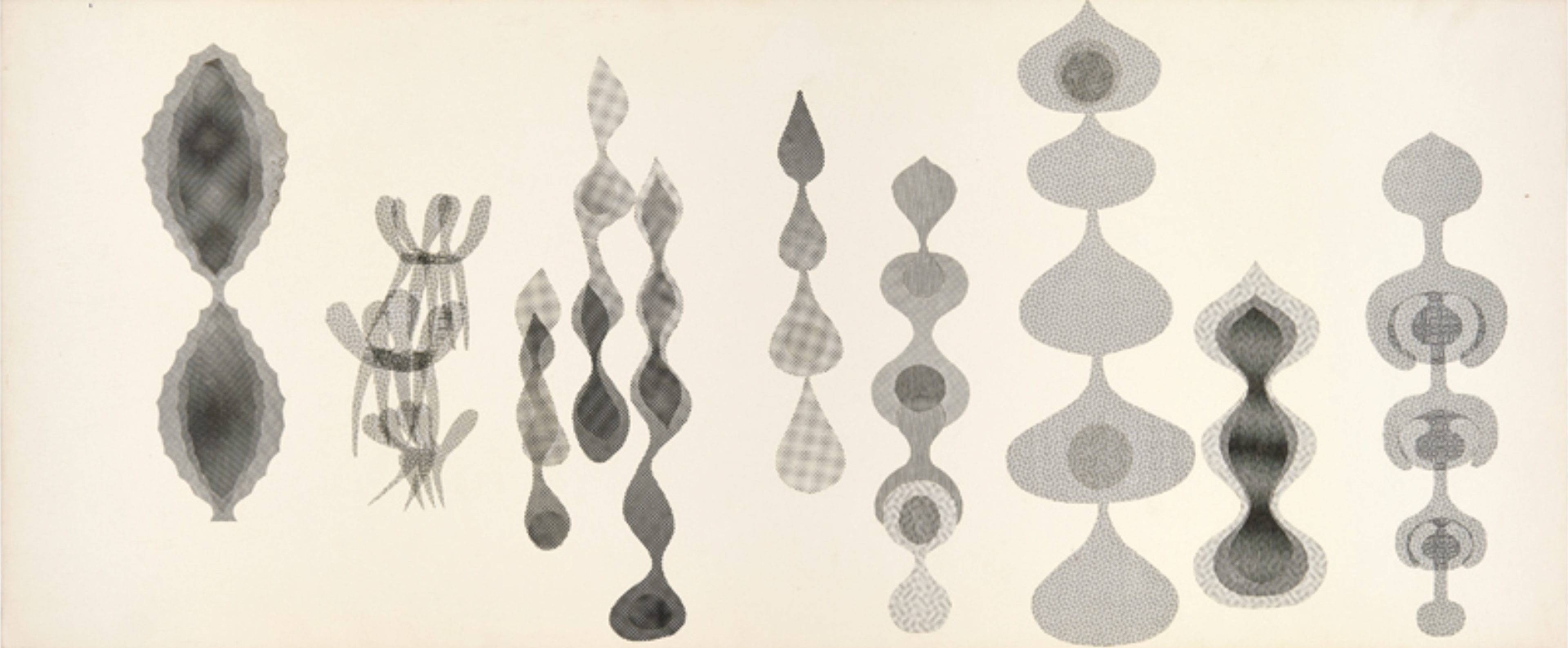
Ruth Asawa, Untitled (ZP.16B, Twelve Looped-Wire Sculptural Forms), c. 1955–1959
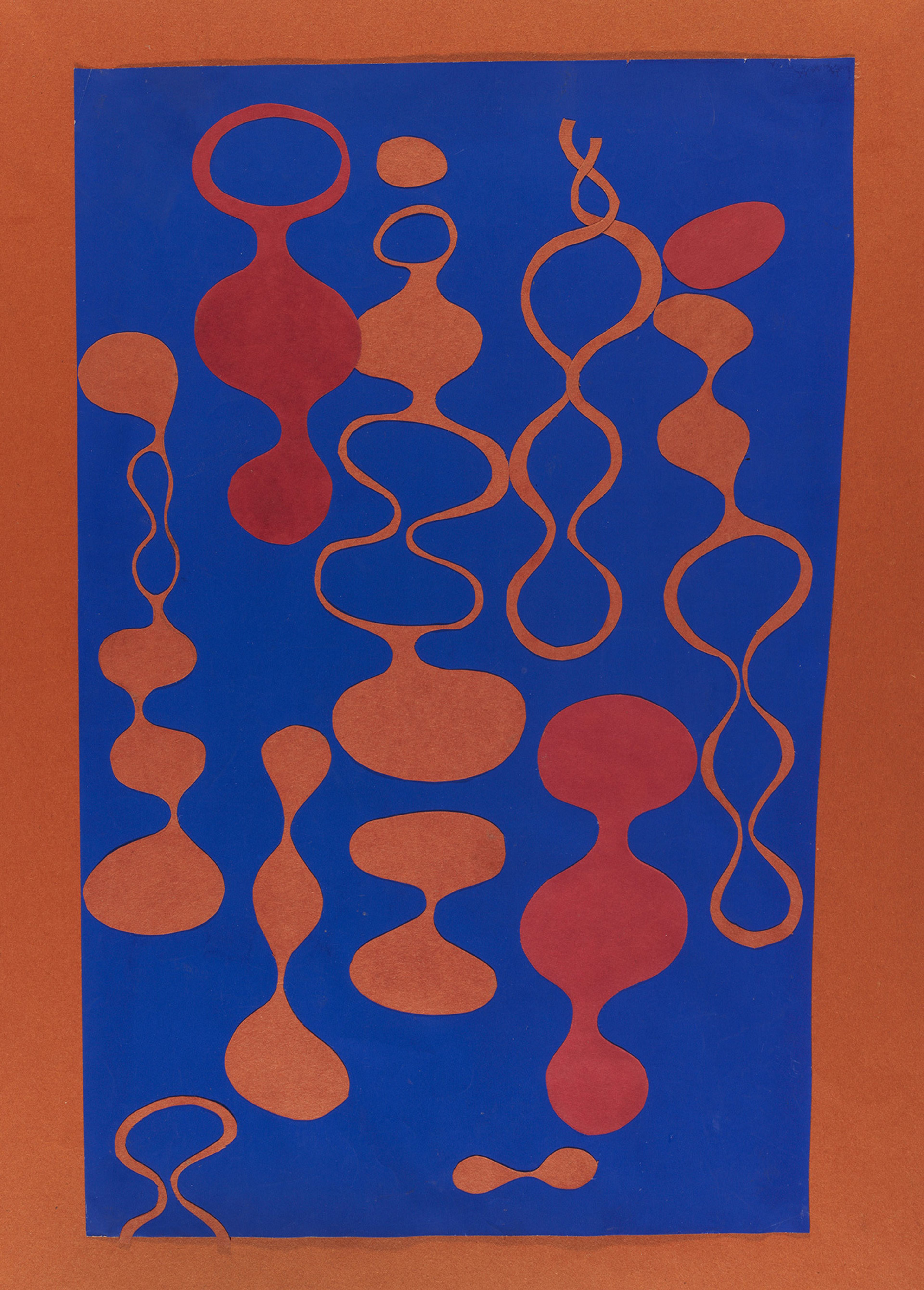
Ruth Asawa, Untitled (BMC.121, Exercise in Color Vibration and Figure Background), c. 1948-1949
Asawa executed her looped-wire sculptures in a number of intricate, interwoven configurations. The present work comprises nine lobes made from a single continuous surface of looped wire—emphasizing the artist’s acuity in achieving a clarity of form from relatively modest means.
As curator Tamara H. Schenkenberg describes, “By the early to mid-1950s, Asawa’s commitment to manual engagement with the material, coupled with her interest in solving an ever-increasing and cumulative set of formal problems posed by her constructions in wire, led her to a series of elaborate permutations…. [These included] an increasing number of lobed forms that redirected the sculpture vertically, adding the element of height to the experience of the work.”
Asawa’s interest in repeated forms derives from Josef Albers’s Basic Design class at Black Mountain College. Rather than emphasize technique, Albers pushed his students to focus on simple, repeated gestures and everyday materials. In works on paper such as Untitled (BMC.121, Exercise in Color Vibration and Figure Background) (c. 1948-1949), Asawa used color to articulate a perceptual shift, an effect she would later explore in three dimensions in her sculptures.
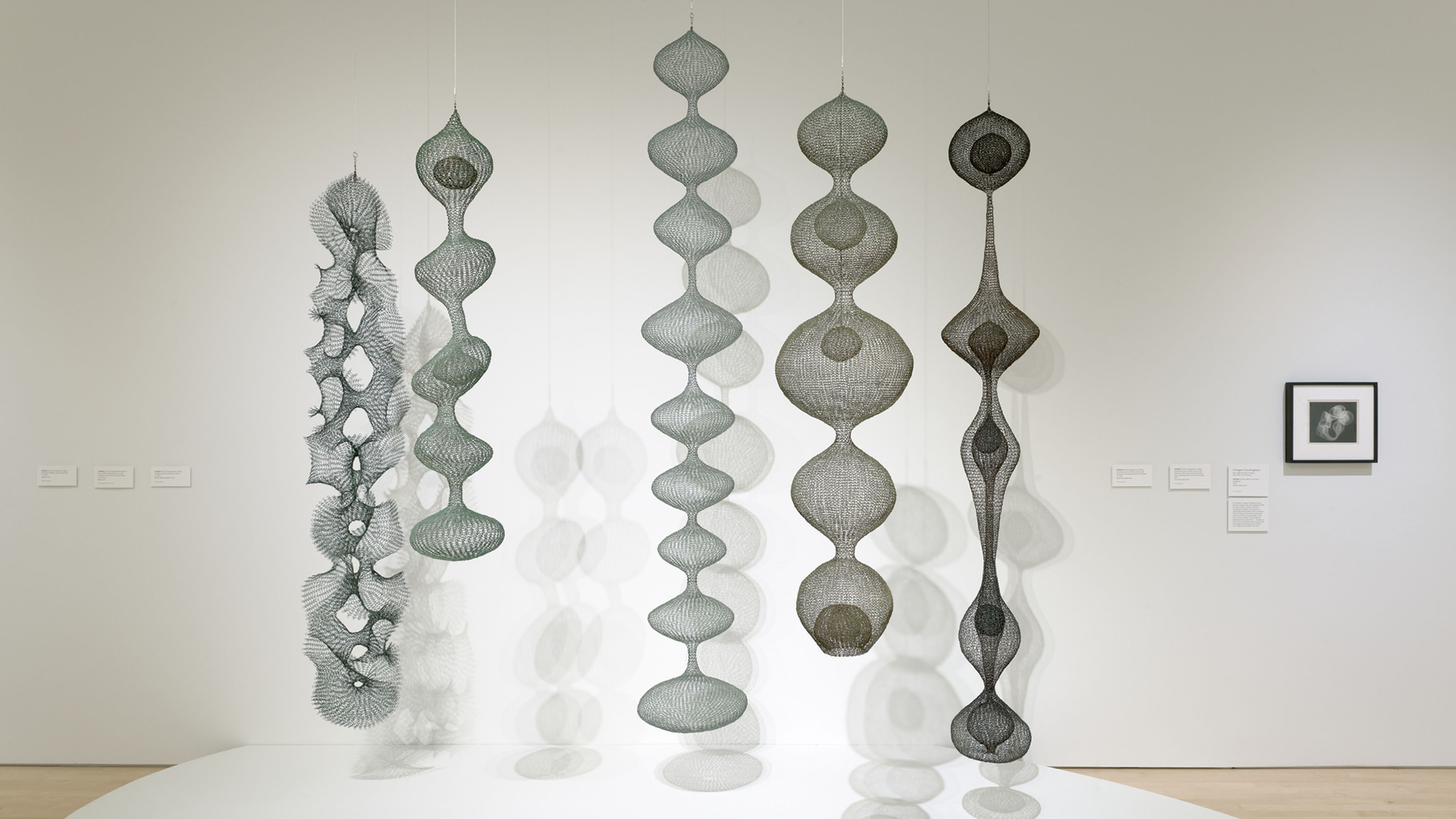
Installation view, Ruth Asawa: Retrospective, SFMOMA, San Francisco, 2025, in which similar works are included. Photo by Henrik Kam
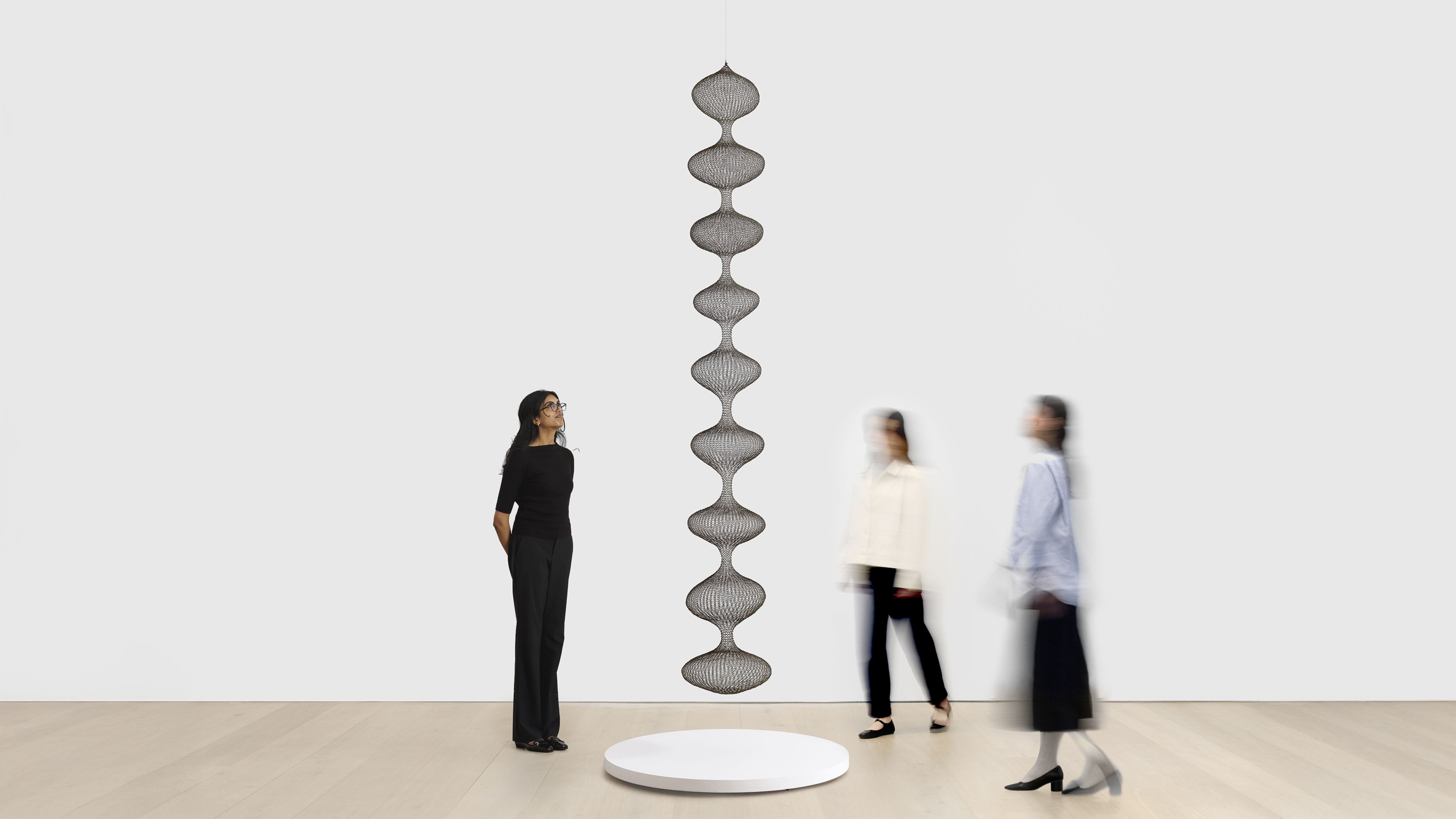

David Zwirner at Art Basel
